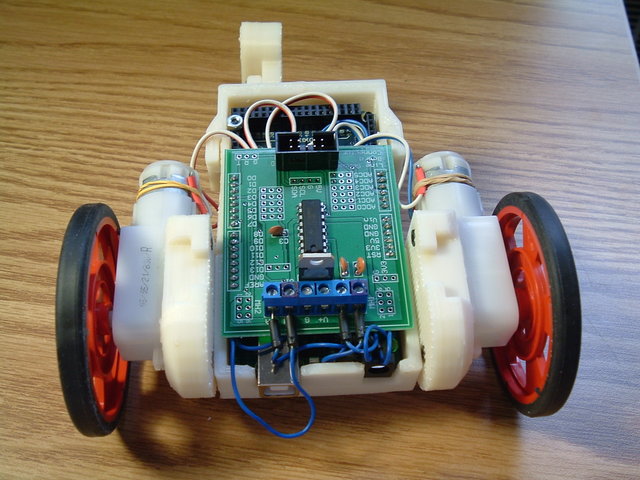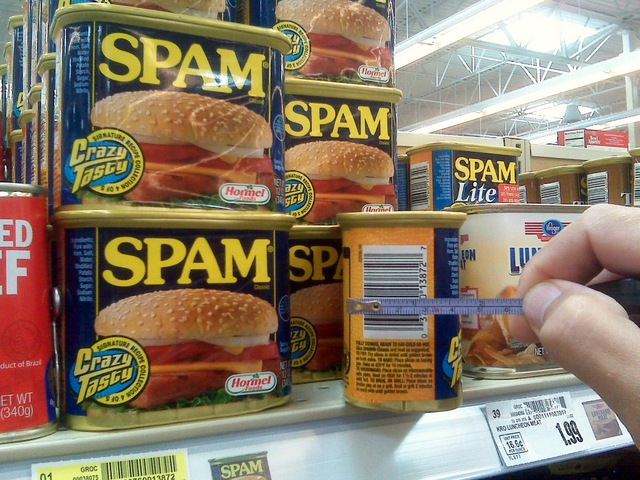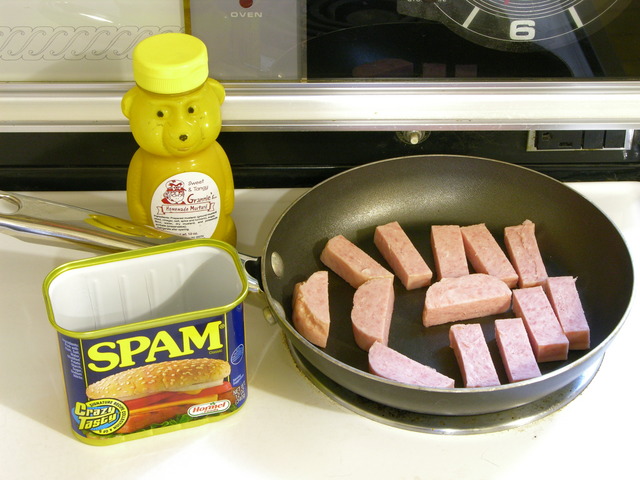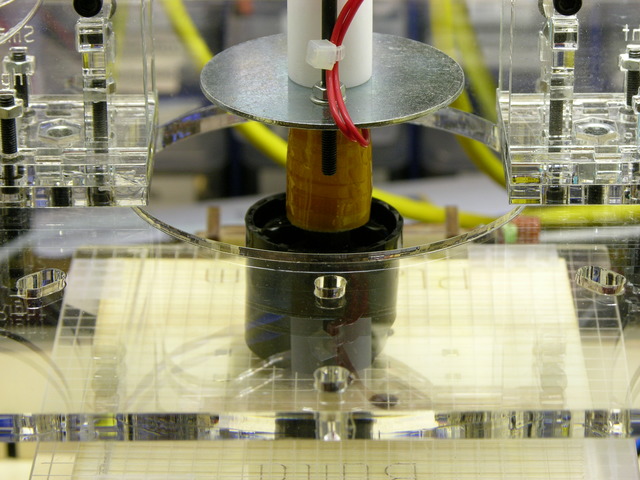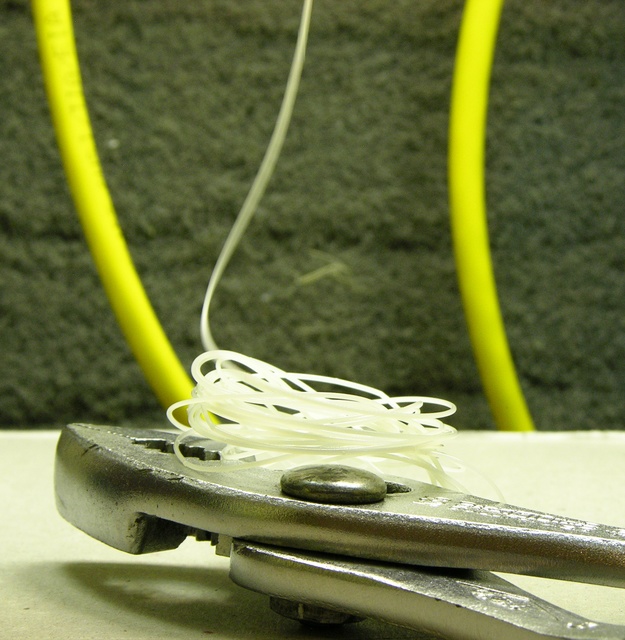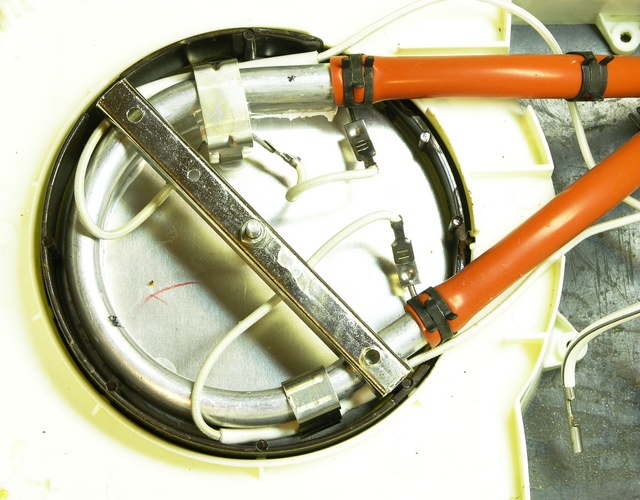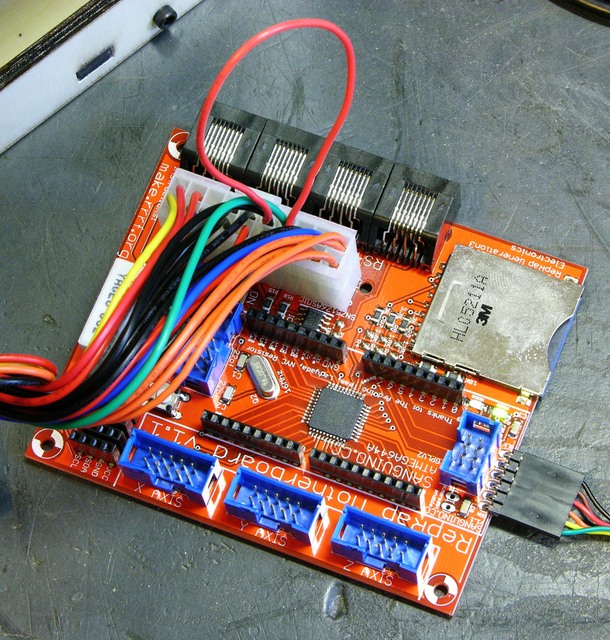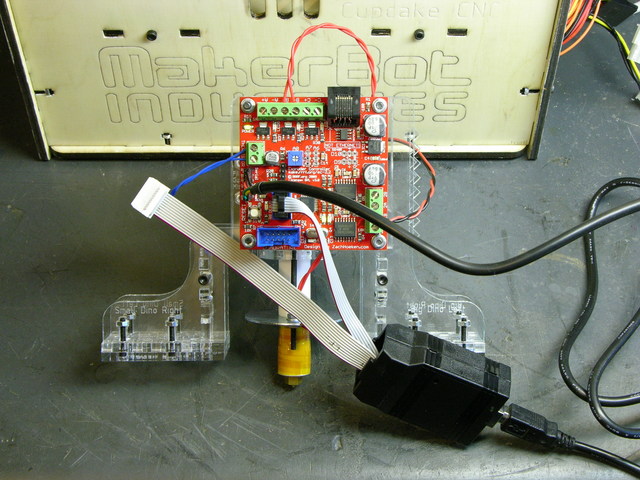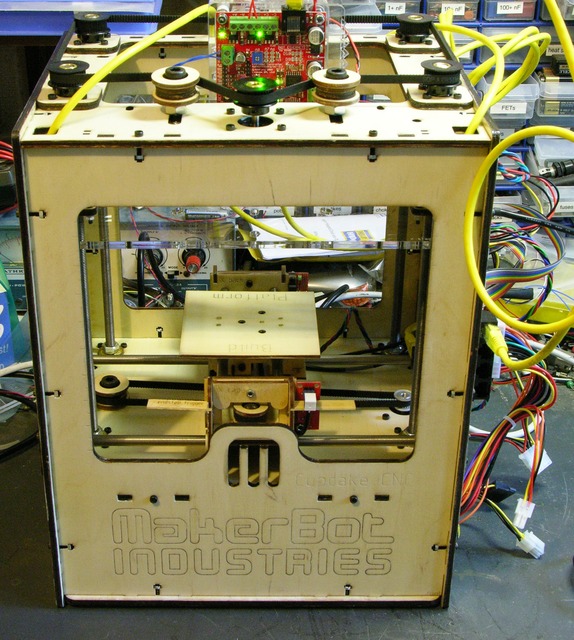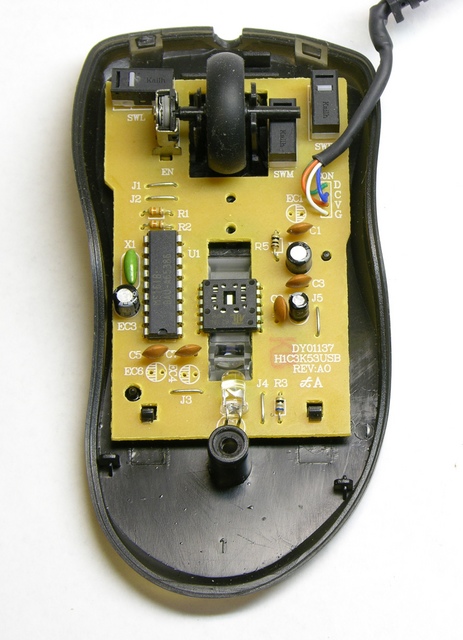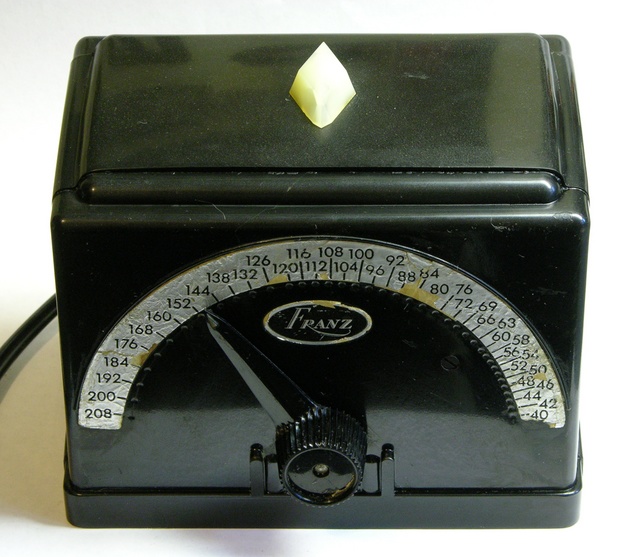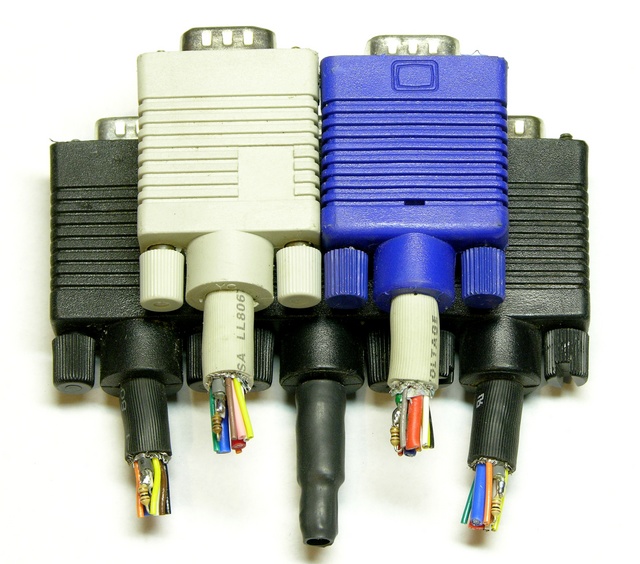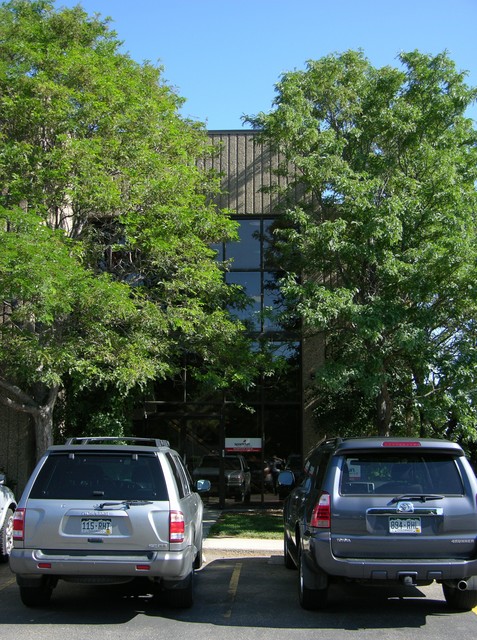Being able to do things like this is why I bought a CupCake. via Make
Rutgers Student’s CupCaked Robot Chassis
November 23rd, 2009 by Keith NeufeldCalibrating the CupCake Part 1: Nozzle Temperature
September 11th, 2009 by Keith NeufeldLast Saturday I went shopping for lunch with a tape measure.
Delicious Spam™, fried up nice and crisp and served with Grannie’s “homemade” [what exactly does that word mean?] mustard. Yummmm!
The behavior of my CupCake during the first week of testing and parts-building had made me think that the nozzle was actually colder than the extruder controller believed it was — barely able to push plastic at allegedly 220°C and much happier at 230°C with not much scorching.
I had previously cross-referenced the extruder’s reported temperature with my infrared thermometer’s reading at room temperature (which I no longer trust) and had dipped the heated nozzle into a small pool of water to try to find the boiling point.
| Condition | Thermometer Measured | Thermometer Converted | Thermistor Reported |
|---|---|---|---|
| room temperature | 68°F | 20°C | 16°C |
| dipping nozzle into water and adjusting set temperature until water boils | 105°C |
In the 100-115°C range, the water would sizzle when the nozzle heater was on and stop boiling when it was off. It boiled most evenly between heating and cooling at a reported 105°C, so I was guessing that it thought 100°C was really 105°C.
This turned out to be incorrect; but it convinced me to perform a more proper thermal calibration, which is what counts.
CupCake First Prints
September 3rd, 2009 by Keith NeufeldThis post is for anyone thinking about a CupCake and wondering what the extrusion is really like. The rest of y’all, go away for a bit.
First extrusion, no CAM happening, just heating up the extruder and running filament.
Repairing Mr. Coffee
September 3rd, 2009 by Keith NeufeldA few weeks ago, my wife’s coffeemaker quit working, and this became A Problem. Not too long after that (or should I say, slightly too long after that) I opened it up, found I couldn’t easily fix what was wrong, and hacked it to bypass the broken part.
The symptom was that it wouldn’t power on anything — not even the timer display and the power LED. I suspected that something must have failed on the control PC board; but just to be thorough (and because they were easy to get to), I continuity-tested the thermal switch and the heating element first. No problems there.
Programming the CupCake Motherboard and Extruder
September 2nd, 2009 by Keith NeufeldBecause the (early batch) CupCake circuit boards are assembled by the customer (me), they’re unprogrammed and the customer (me) has to use an in-system programmer (ISP) to burn the bootloader and then an FTDI USB-serial cable and Arduino development environment to program the firmware. Happily, the prerelease kit included both a USBtinyISP and the necessary FTDI cable, so I was good to go.
I got the bootloader programmed into the motherboard just fine, but I couldn’t get the Arduino IDE to program the firmware into it (and yes, I did install the Sanguino support). The motherboard has a switch to signal the (PC ATX) power supply to turn on and feed all the peripherals; but it’s emphasized that standby power is always provided to the ATmega on the motherboard, so there were no steps needed to power up the ATmega for firmware download. Further, the motherboard power switch didn’t power up the power supply, so I figured it must not be needed yet.
But every time I tried to upload firmware, I kept getting a long timeout and:
Binary sketch size: 15002 bytes (of a 63488 byte maximum)
avrdude: stk500_recv(): programmer is not responding
avrdude: stk500_recv(): programmer is not responding
as though the Arduinoness of the motherboard wasn’t there.
Lots of MakerBot forum posts identify the same problem and talk about jumpering the power supply cable to make it turn on.
C’mon, that can’t be for real. The programming instructions don’t say anything about needing to mess with your power supply cable, and that would be a massive omission.
Maybe another look at the motherboard power switch? Switching it didn’t make anything happen, and the schematic for my V1.1 motherboard shows that the power-on signal to the ATX power supply is under the control of Arduino digital pin 14 — a chicken and egg problem.
After about an hour of searching CupCake and RepRap forums, poring over the schematic for anything I might have missed, trying different random things, and generally getting pretty good and angry, I gave up and used Wikipedia’s ATX power supply entry to help me jumper the power supply’s power-on lead. The power supply came on and the motherboard programmed on the first try.
You’re kidding me. This is a necessary step, it causes so much trouble that everybody posts about it in the forums, and it’s still not covered in the assembly instructions? I honestly still think I must be missing something.
Fool me twice, shame on me. When it was time to load firmware on the extruder controller, I found that leaving the USBtinyISP connected from the computer to the PC board’s ISP header is a great way to supply the microcontroller with power for the first Arduino firmware upload.
Yes, by this point the motherboard was correctly controlling the power supply; but this was a handy trick I need to remember.
CupCake Pilot Assembly
September 2nd, 2009 by Keith NeufeldAs of a weekend ago, we are assembled! There are changes to be made, but they’ll clean up along the way.
Notes from the process:
All of the cables will get proper cable management. I won’t show closer pictures of them until they do.
Mouse Cables for CupCake Endstops
September 1st, 2009 by Keith NeufeldI finished assembling my CupCake a week and a half ago — more detail in a separate post. For now, information about my decision to use mouse cables to wire up the endstops.
The CupCake comes with CAT5E (ethernet, among other things) patch cords to use to connect everything together. The X stage doesn’t have room for 8P8C (RJ-45) connectors on the Y-axis endstops, so you have to butcher the cables and put one new end on each. Ethernet patch cords are pretty bulky and unsupple; and I figured since I had to terminate my own cables anyway, I might as well use something more to my liking. I don’t fault MakerBot for supplying patch cords — it’s a great choice for most makers, and weirdos like me can always roll their own.
I only needed three conductors and headphone cable is pretty supple; but the very fine stranded wires inside headphone cable can be a bit of a challenge to work with. Cords from dead mice seemed like a better fit, even though they have an extra conductor I didn’t need. So I grabbed some from the “Keith box” at the office and got to work.
Mouse Guts
For those who haven’t seen it before, here’s the inside of an optical mouse.
Repairing a Vintage Electromechanical Metronome
August 23rd, 2009 by Keith NeufeldPassing behind a church-operated thrift store a month or two ago, I saw a black bakelite box in the area where they discard stuff they don’t want, about to get rained on. After seeing that it was a metronome, I rescued it and made it mine. This weekend I tried it out for the first time and ended up repairing the motor. The motor’s workings were unfamiliar to me, but its repair was self-evident.
Oh, and I cleaned it up a bit, too.
VGA Dongles for Mac Mini Headless Booting
August 23rd, 2009 by Keith NeufeldAt work we’re placing Mac Minis as network appliances into backbone wiring closets, in part to decentralize DHCP and DNS services so they survive partial failures (or scheduled outages) of the network any time the local backbone drop also survives, in part to run local proxy service for WCCP because our backbone doesn’t support GRE.
We reinstall the Minis with OpenBSD; and whether this would be true with OS X on them or not, at least with OBSD, they don’t like to boot without a monitor connected. A few weeks ago I made a batch of VGA “dongles” to trick the Minis into thinking a monitor was present.
SparkFun Tour
August 23rd, 2009 by Keith NeufeldAt the end of July, I was traveling in the Boulder area and had the privilege of getting a tour of the SparkFun headquarters. I got my first Arduino from them; and although I’m not a terribly frequent shopper, I follow their blog assiduously and I love what they do, so it was a pretty thrilling experience.
SparkFun posts a lot of pictures on their site and they’re not shy about showing off their facility, but the online photos don’t give quite the same perspective on their operation that an outsider gets when coming through for the first time. They told me there was nothing I couldn’t photograph and post, so I wanted to share a bit from my tour.
